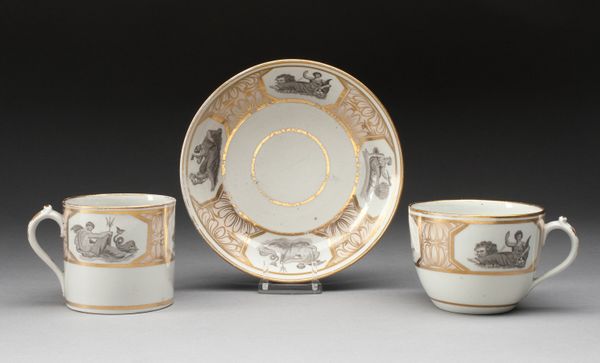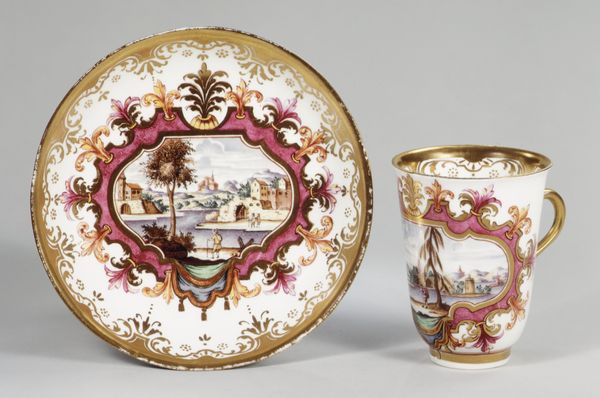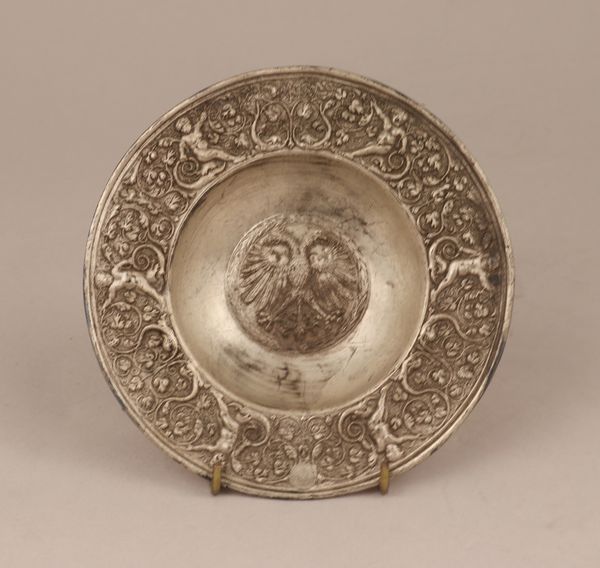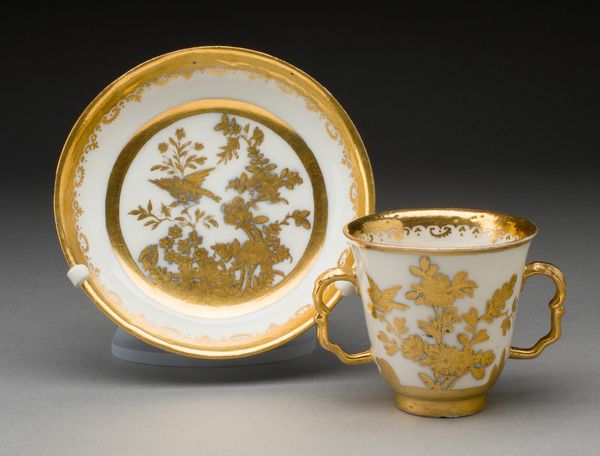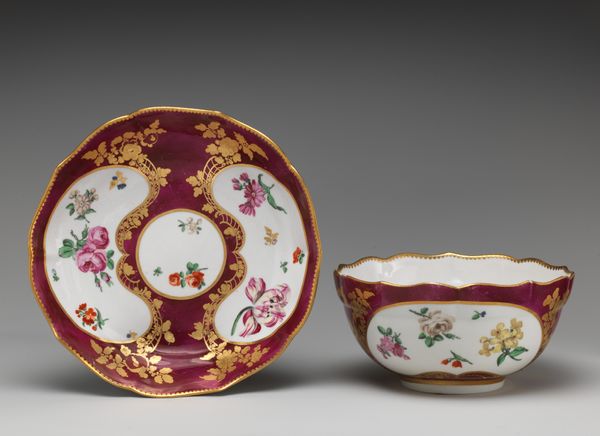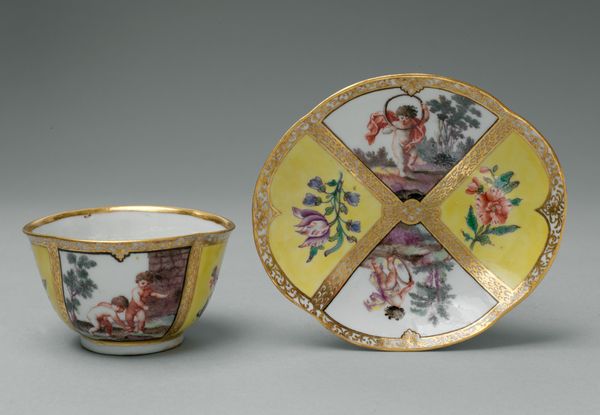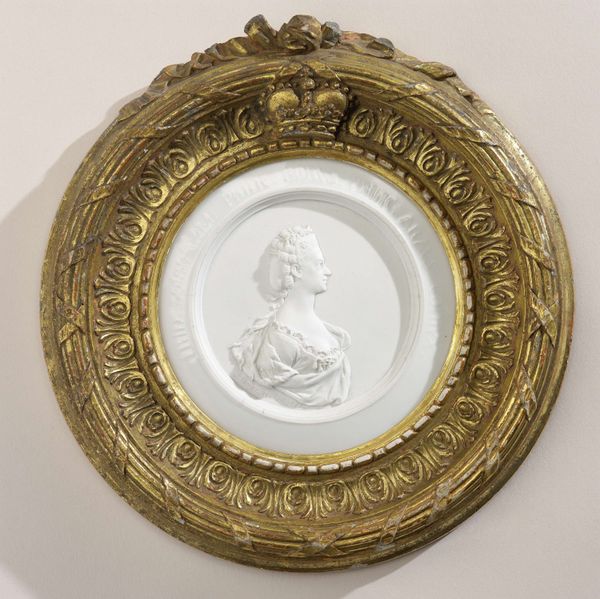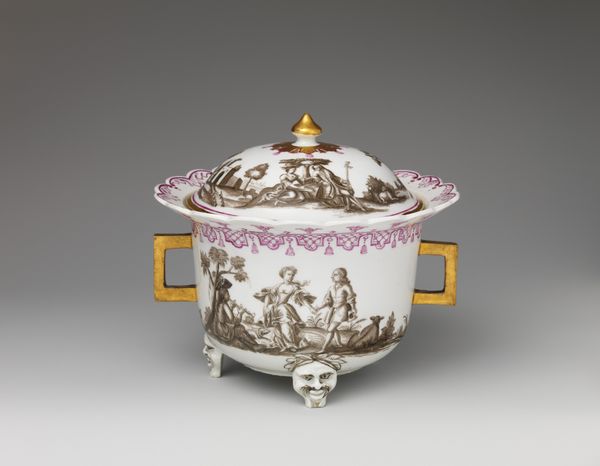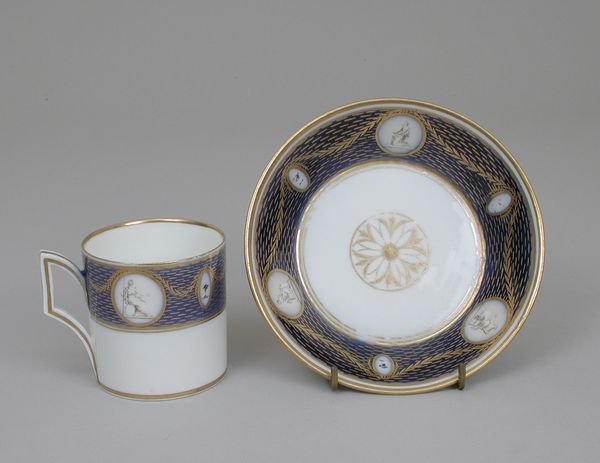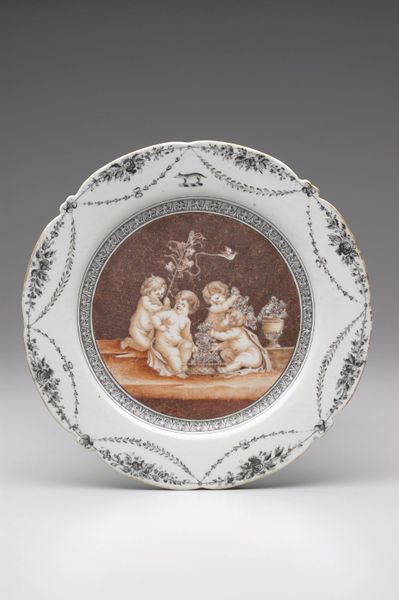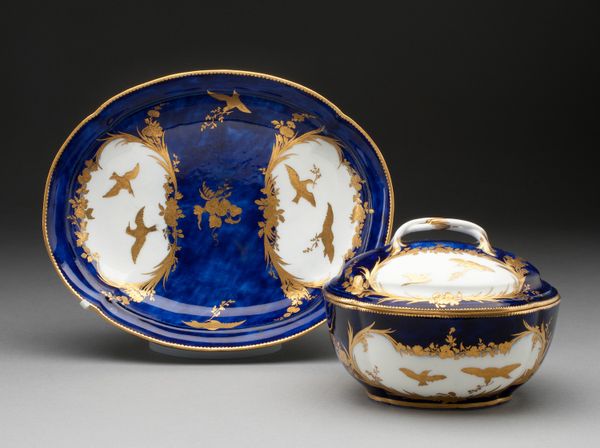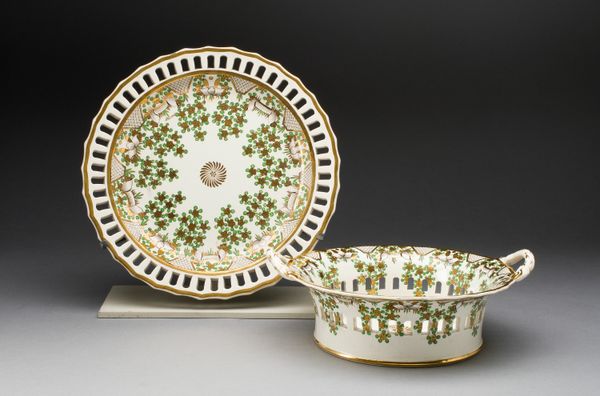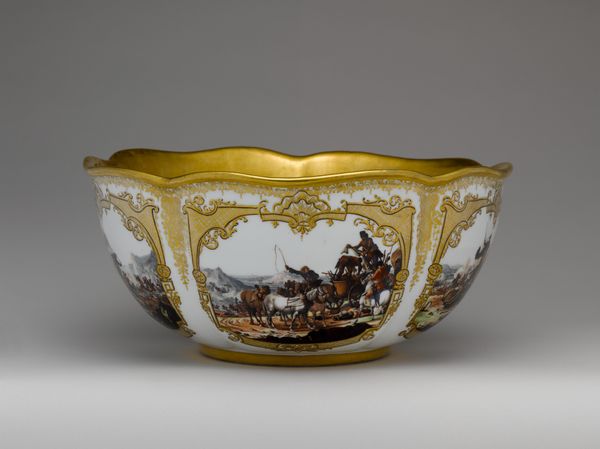
ceramic, porcelain
#
portrait
#
ceramic
#
porcelain
#
ceramic
#
rococo
Dimensions: height 4 cm, diameter 7 cm, diameter 3.3 cm
Copyright: Rijks Museum: Open Domain
Editor: Here we have a bell-shaped cup and saucer, crafted around 1760. It’s porcelain and features a portrait of Lieve Geelvinck. The delicacy of the porcelain is striking, almost ethereal. I’m curious, what story do you think this piece tells? Curator: This is a fascinating glimpse into the socio-political landscape of 18th century Netherlands. Tea drinking had become a ritual inextricably linked to commerce and class. What’s particularly interesting is how portraiture, usually reserved for paintings, is adapted here. Editor: It seems a bold statement to place a portrait on something so functional, don’t you think? Curator: Absolutely! By transferring the imagery onto these everyday objects, you democratize the portrait to a certain extent. The Geelvinck family were powerful figures in the Dutch East India Company. How do you interpret that, seeing a prominent family's likeness now adorns an object used in a daily ritual? Editor: So, owning this cup and saucer was about more than just enjoying tea; it was about displaying one's connection to or aspiration towards a certain social status? A claim of belonging? Curator: Precisely! It highlights the subtle yet powerful role of objects in solidifying social hierarchies. Owning such pieces sent a visual signal. A sign of both refinement and wealth. What do you make of the fact that we encounter it in the museum space today? Editor: I guess that the piece outlived its function. Today, displayed in the Rijksmuseum, it invites the audience to think of history, status, class, and representation in new and unexpected ways. Curator: Exactly! That interplay between then and now, utility and art, is what makes it such a compelling object for understanding the past.
Comments
No comments
Be the first to comment and join the conversation on the ultimate creative platform.
